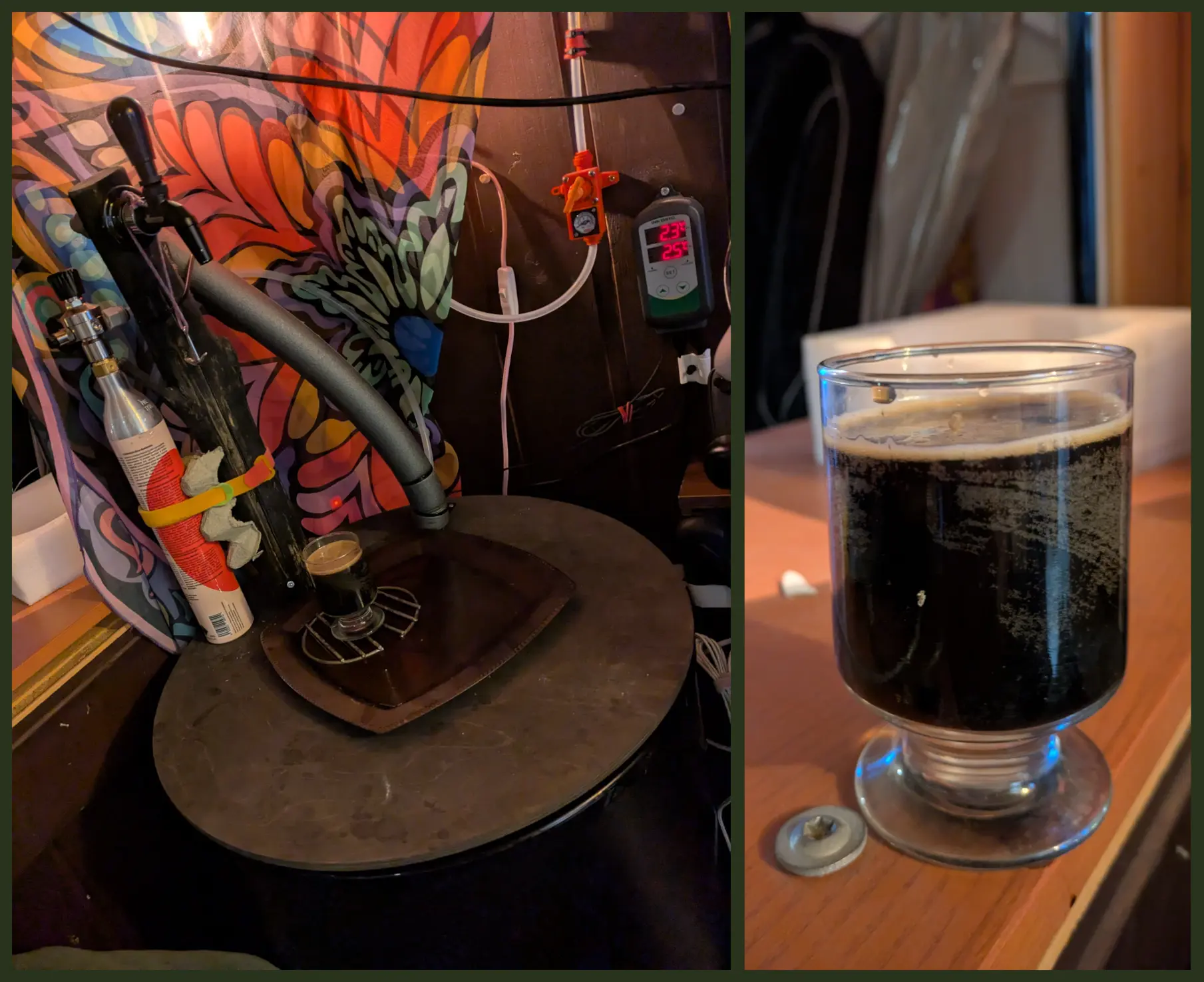It's been clearing out at 2,5 °C for over 24 hours already, so I couldn't wait any longer and took a little sampling. And it's a-lovely :D
This is pretty much a classic stout, but with Viking Malt's Sahti malt for the majority of the grist. The void-ness comes from Viking Malt's Black malt (1300 - 1500 EBC). Some leftovers of Tuoppi caramel rye malt and a calculated dose of Simpson's Premium English caramalt also went in. The rye in particular is keen to hijack the taste profile, bringing in the taste of Finnish classic 'kotikalja', a non-fermented malt beverage. That one is kept in it's place, but I do regret not using a bit more of the English caramalt.
The yeast used was the fresh yeast that's a hallmark of the sahti style. It gives a banana-like flavour, and I've found it can be controlled to a great extent by adjusting fermentation temperature. This one was set to 16,5 °C. Around 14 °C the banana aroma tends to get overpowered by fruity hops. Pressurised fermentation at 0,8 bar as always.
I made this batch to use up some leftovers, so I went with a pretty daring dosing of Moutere hop pellets for the first hop addition, followed up towards the end of the boil with Challenger. On this first tasting the Moutere is surprisingly subdued.
Plenty of time to run some xmas bottles for friends and family :) Cheers!

Ok, so if you are interested in measuring methods for density:
gravimetry - you weigh your sample in standard vessel (you have to have constant temperature)
the floaters (hydrometer) - you read the line on the scale.
the U tube - it measures resonant frequency when it is vibrated. The frequency is dependent on density of the tube + sample.
optical methods- these indirectly measure something in the sample, in our case it is sugar.
So you have to ask yourself what you measure. With methods 1-3 it is gravity, with methods 4 it is something different which points you to some approximation of gravity. Also I am long from school so my terminology might be mixed up.
Cheers, that's a nice primer. I do have an engineering degree that covered plenty of analytic chemistry :)
I'm only concerned with taking OG and FG with as tiny a sample as possible = creative pycnometry or getting a refractometer. Although just today I realised a pendulum might also offer a creative gravimetric insight...
Craft brewing, baybee XD
U-tube is just a glorified pendulum. But using this classical U shape for liquids is worth it. Pendulums is how you measure mass if gravity is too low.
I know some people inverted U-tube and immersed piezo fork into liquid. Then they struggled with reflections and setting feedback right or making sweep practical enough. And then there is electrical connections going into the probe through liquid surface, which is another concern. Still, in batch process (and all brewing is batch process) immersible probe should be much faster and washable than flow-through, I guess.